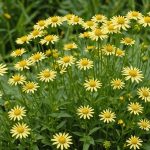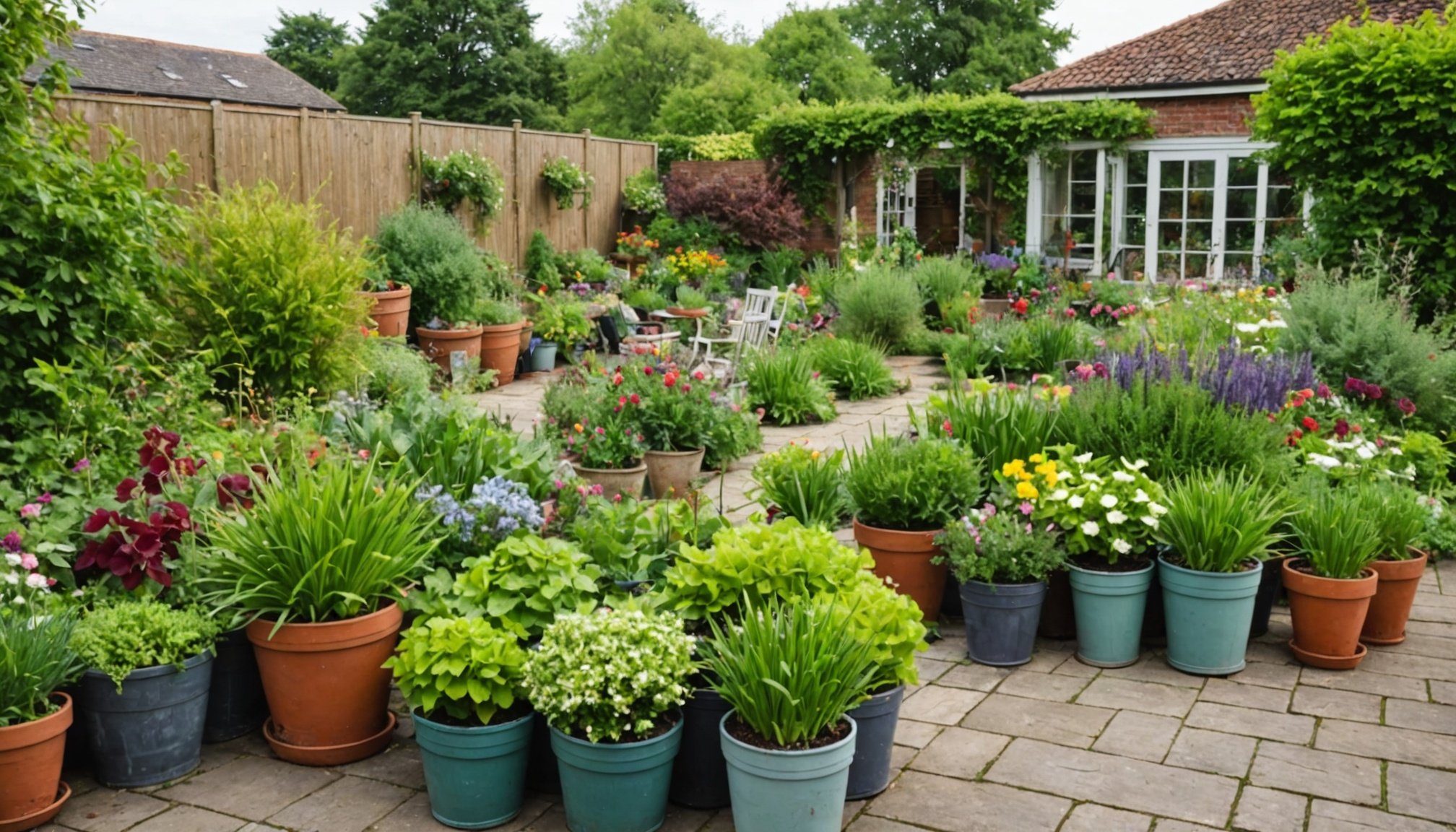Year-Round Gardening Bliss: A Guide for UK Home Gardeners on Choosing and Arranging Plants to Year-Round Gardening
Gardening is a hobby that brings joy and tranquility to many, but it can be challenging to maintain a vibrant garden throughout the year. However, with the right choices and arrangements, you can enjoy a beautiful and thriving garden 365 days a year. In this guide, we will explore how to select the perfect plants, arrange them effectively, and maintain your garden through every season.
Choosing the Right Plants for Your Garden
When it comes to selecting plants for your garden, it’s crucial to consider the climate, soil type, and the amount of sunlight your garden receives. Here are some key factors to keep in mind:
Also to read : Discover the coolest insulated mugs perfect for coffee enthusiasts
Seasonal Plants
Different plants thrive in different seasons. Here’s a quick view of some popular seasonal plants:
-
Spring:
Additional reading : Top Innovative Features UK Homeowners Need in Their Robotic Lawn Mowers
-
Tulips and daffodils are great for adding color and vibrancy as the weather warms up.
-
Fruit trees like apple and cherry trees start to bloom, making your garden a picturesque haven[1][3].
-
Summer:
-
Annuals like marigolds and zinnias provide continuous blooms throughout the summer.
-
Perennials such as lavender and coneflowers are perfect for hot weather and attract pollinators[3].
-
Autumn:
-
Asters and chrysanthemums offer late-season blooms that add color as the leaves change.
-
Planting bulbs like glaïeuls and tulips in the autumn ensures a beautiful display in the spring[1].
-
Winter:
-
Evergreen trees and shrubs like holly and boxwood maintain greenery year-round.
-
Winter-flowering heather and cyclamen can add a splash of color during the colder months[3].
Plant Types
Understanding the different types of plants can help you make informed decisions:
-
Perennials:
-
These plants come back year after year and are great for long-term garden design.
-
Examples include roses, daylilies, and hostas[3].
-
Annuals:
-
These plants complete their life cycle in one year and need to be replanted each season.
-
Examples include petunias, impatiens, and marigolds[3].
-
Bulbs:
-
Bulbs like tulips, daffodils, and hyacinths are planted in the autumn or early spring and bloom in the spring.
-
They are a great way to add early-season color to your garden[1].
Arranging Your Plants for Maximum Impact
The arrangement of your plants can make or break the aesthetic of your garden. Here are some tips to help you design a beautiful and functional garden:
Garden Design Principles
-
Balance:
-
Ensure that your garden has a balance of heights, textures, and colors.
-
Use a mix of tall trees, medium-sized shrubs, and low-growing flowers to create visual interest[3].
-
Harmony:
-
Choose plants that complement each other in terms of color and texture.
-
For example, pair purple lavender with yellow coneflowers for a harmonious contrast[3].
-
Focal Points:
-
Create focal points in your garden using statement plants or features like a water fountain or a statue.
-
This draws the eye to different parts of the garden and adds visual interest[3].
Practical Tips for Arranging Plants
Here are some practical tips to keep in mind when arranging your plants:
-
Soil Preparation:
-
Before planting, prepare the soil by removing weeds and adding compost or organic fertilizer.
-
This ensures that your plants have the best chance to thrive[3].
-
Spacing:
-
Make sure to leave enough space between plants for proper growth and air circulation.
-
Overcrowding can lead to disease and pest issues[3].
-
Layering:
-
Use a layered approach to planting, starting with groundcover, then shrubs, and finally trees.
-
This creates a visually appealing and functional garden[3].
Maintaining Your Garden Throughout the Year
Maintaining your garden is crucial to ensure it remains healthy and beautiful. Here are some tips for each season:
Spring Maintenance
-
Pruning:
-
Prune your plants in the spring to promote new growth and remove dead or damaged branches.
-
For example, prune roses in late winter or early spring to encourage blooming[1].
-
Mulching:
-
Apply a layer of mulch around your plants to retain moisture and suppress weeds.
-
Use organic mulch like straw or wood chips, and avoid mulching too early in the spring to allow the soil to warm up[2].
Summer Care
-
Watering:
-
Water your plants regularly, especially during hot weather.
-
Avoid overhead watering to prevent fungal diseases; instead, water at the base of the plants[3].
-
Fertilizing:
-
Fertilize your plants during the growing season to provide necessary nutrients.
-
Use an balanced fertilizer for flowering plants to promote blooming[3].
Autumn Preparation
-
Bulb Planting:
-
Plant bulbs in the autumn for spring blooms.
-
Choose a location with good drainage and plant the bulbs at the right depth[1].
-
Leaf Cleanup:
-
Clean up fallen leaves to prevent them from suffocating your plants.
-
Use the leaves as compost or mulch to enrich your soil[2].
Winter Protection
-
Protecting Plants:
-
Protect your plants from harsh winter conditions by using burlap or other protective coverings.
-
Bring potted plants indoors or to a protected area to shield them from frost[3].
-
Winter Pruning:
-
Prune deciduous trees and shrubs during the winter when they are dormant.
-
This helps maintain shape and promotes healthy growth in the spring[1].
Additional Tips and Tricks
Here are some additional tips to make your gardening experience even more enjoyable:
Recycling Garden Waste
- Use garden waste like grass clippings and fallen leaves as mulch or compost.
- This not only reduces waste but also enriches your soil and reduces the need for synthetic fertilizers[2].
Creating a Garden Book
- Keep a garden book to track your plantings, note weather patterns, and record any issues or successes.
- This helps you plan better for future seasons and make informed decisions about your garden[3].
Table: Seasonal Planting Guide
Here is a quick view of a seasonal planting guide to help you plan your garden:
| Season | Plant Type | Examples | Tips |
|---|---|---|---|
| Spring | Bulbs | Tulips, Daffodils | Plant in autumn, water well after planting[1] |
| Spring | Perennials | Roses, Lavender | Prune in late winter, mulch around plants[1][3] |
| Summer | Annuals | Marigolds, Zinnias | Water regularly, fertilize monthly[3] |
| Autumn | Bulbs | Glaïeuls, Tulips | Plant in autumn, choose well-draining soil[1] |
| Winter | Evergreens | Holly, Boxwood | Protect from harsh winds, water sparingly[3] |
Quotes from Gardening Experts
-
“The key to a successful garden is understanding the needs of each plant and providing the right conditions for them to thrive.” – Gardening Expert, Prêt à Jardiner[1].
-
“Mulching is one of the simplest and most effective ways to maintain soil health and reduce weed growth.” – Gardening Guide, Rustica[2].
-
“Perennials are a great investment for any garden because they come back year after year, providing continuous beauty and interest.” – Gardening Blog, Willemse France[3].
Creating a year-round garden is a rewarding and enjoyable process. By choosing the right plants, arranging them thoughtfully, and maintaining your garden through each season, you can ensure a beautiful and thriving garden 365 days a year. Remember to recycle garden waste, keep a garden book, and always be mindful of the specific needs of each plant. Happy gardening!
Detailed Bullet Point List: Tips for Year-Round Gardening
Here are some detailed tips to help you maintain a vibrant garden throughout the year:
-
Spring:
-
Prune your plants to promote new growth.
-
Apply a layer of mulch around your plants to retain moisture and suppress weeds.
-
Plant bulbs for spring blooms.
-
Start seeds indoors for summer annuals.
-
Summer:
-
Water your plants regularly, especially during hot weather.
-
Fertilize your plants monthly to provide necessary nutrients.
-
Deadhead flowers to encourage continuous blooming.
-
Keep an eye out for pests and diseases, and treat promptly if necessary.
-
Autumn:
-
Plant bulbs for spring blooms.
-
Clean up fallen leaves to prevent them from suffocating your plants.
-
Divide and replant perennials to maintain their health and vigor.
-
Apply a layer of mulch to protect your plants from frost.
-
Winter:
-
Protect your plants from harsh winter conditions by using burlap or other protective coverings.
-
Bring potted plants indoors or to a protected area to shield them from frost.
-
Prune deciduous trees and shrubs during the winter when they are dormant.
-
Plan your garden for the upcoming year by reading gardening books and attending workshops.
By following these tips, you can ensure that your garden remains healthy and beautiful throughout the year. Happy gardening











